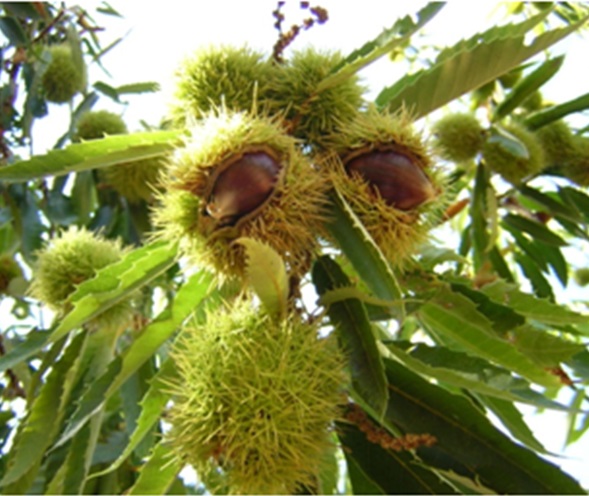The chestnut tree is a species that can be exploited both for timber as well as fruit. In Portugal chestnuts are mainly cultivated for fruit production as timber has mostly lost its importance in recent years. The area of chestnut production worldwide has increased steadily over the last few years. Production has increased from around 1,500 tons in 2006 to close to 2,000 tons in 2010. Analysis of the evolution of production and area shows that the production growth rate (5.6%) was higher than the area growth rate (3.4%). This indicates an increase in productivity from 3.35 tons/ hectare to 3.73 in 2006. China is the world's largest producer, responsible for more than 80% of the world total in 2010. Portugal is the 7th largest producer, producing just over 1% of the total. In addition to being the world's largest producer, China also has the largest production area. Its productivity is about twice that of the second largest producer, Greece. Portugal has the 5th largest harvest area but is only the 7th largest producer, indicative of lower productivity. It is known that the official figures on production in Portugal and Spain fall short of the real values. This is because of the parallel market, self-consumption and often not all of the information is made available. The situation is aggravated by a less than rigorous inventory of the territory to determine the exact area occupied by chestnuts.
Based on the available information and productivity data provided by the main associations of the sector, it can be estimated that the production of chestnut in Portugal is between 35,000 and 45,000 tons per year. According to official data from 2012, Portugal was the 4th largest exporter to Brazil, with China being the first, followed by Italy and South Korea. Recent data from INE and FAOSTAT 2012 show clearly that, despite an increase between 2006 and 2010, the quantity of chestnuts produced has been declining. It can therefore be inferred that productivity has been declining in Portugal in recent years (in: Estudo Económico do Desenvolvimento da Fileira da Castanha – Fórum Florestal).
The productivity per hectare of chestnut orchards is low, less than half of the country’s potential, due mainly to the lack of improved plant materials with improved resistance to ink and blight diseases. Root rot/ink disease continues to be the main threat for chestnut productivity in Portugal. Chemicals used in the last decades have proven to be neither efficient nor environmentally acceptable. Also, there is no biological control method available, unlike the the case for blight, through hypovirulence, and for the gall wasp, using the parasitoid Torymus sinensis. Overall, the European market suffers from a lack of improved plant materials particularly in relation to rootstocks that can impart disease resistance.
For fruit production chestnuts can be grafted with different varieties that yield improved hybrid rootstocks. These can be obtained by crossing European species and Asian species, resistant to P. cinnamomi, and in addition to disease resistance should be compatibile with regional varieties of chestnut. European chestnuts arehighly priced in the national and international markets, as they have excellent organoleptic qualities, are gluten free, have essential amino acids, quality lipids and significant amounts of fibres and minerals, especially iron. Chestnuts are compatible with multifunctional farms that diversify and value the production (fruits, mushrooms, agro-tourism and value-added products such as flours, cakes, jellies). Chestnuts have a strong economic impact on mountain regions of the European SW and make an important contribution in the combat against desertification, a trend occurring in these regions.





